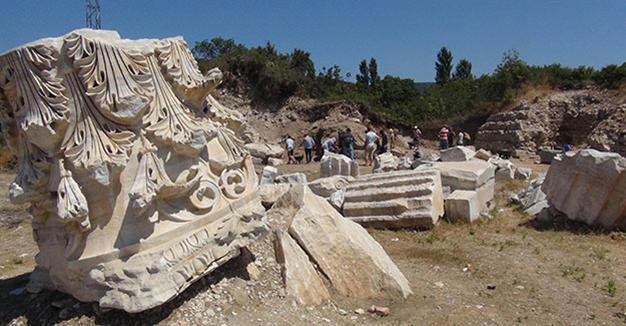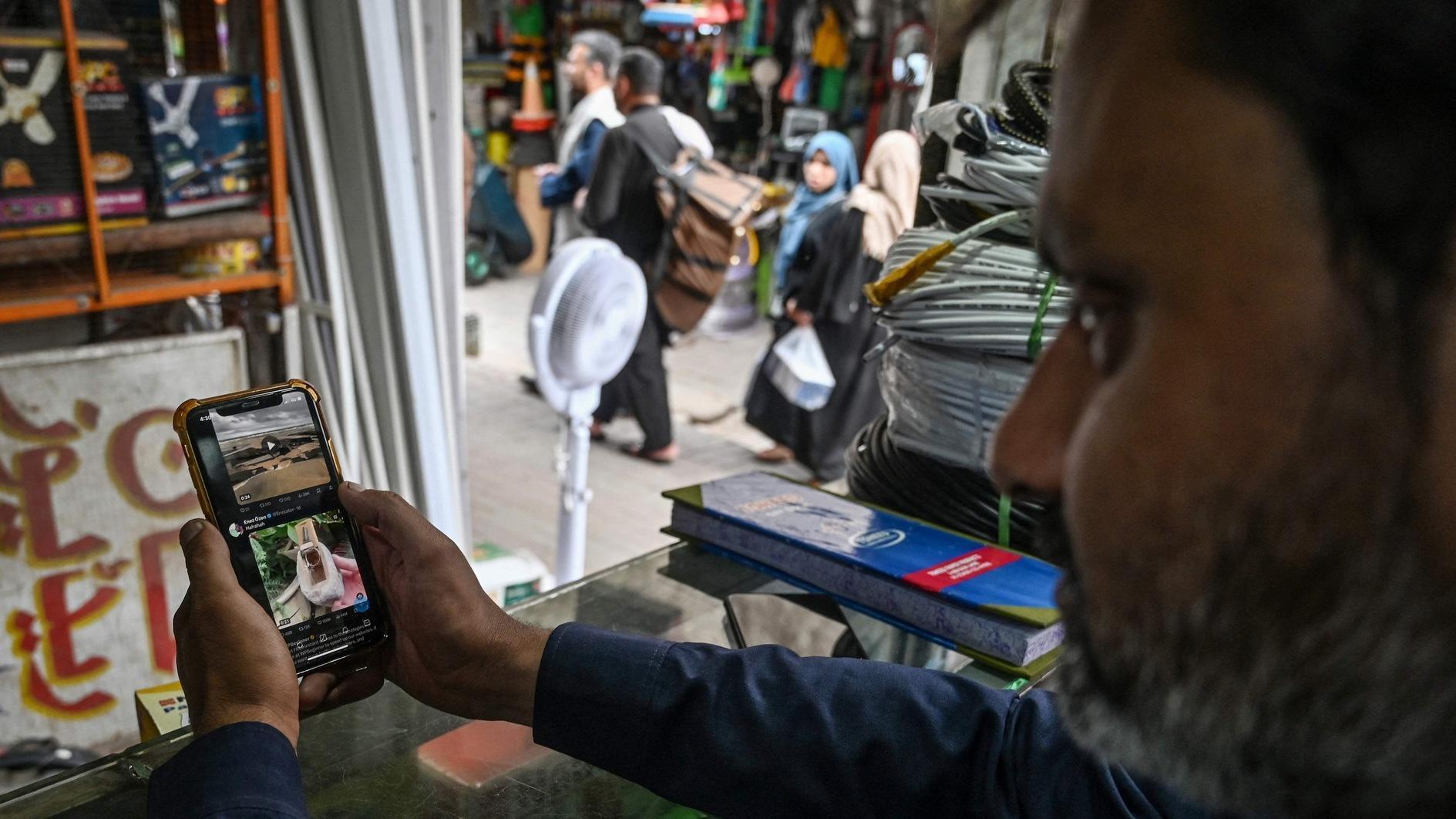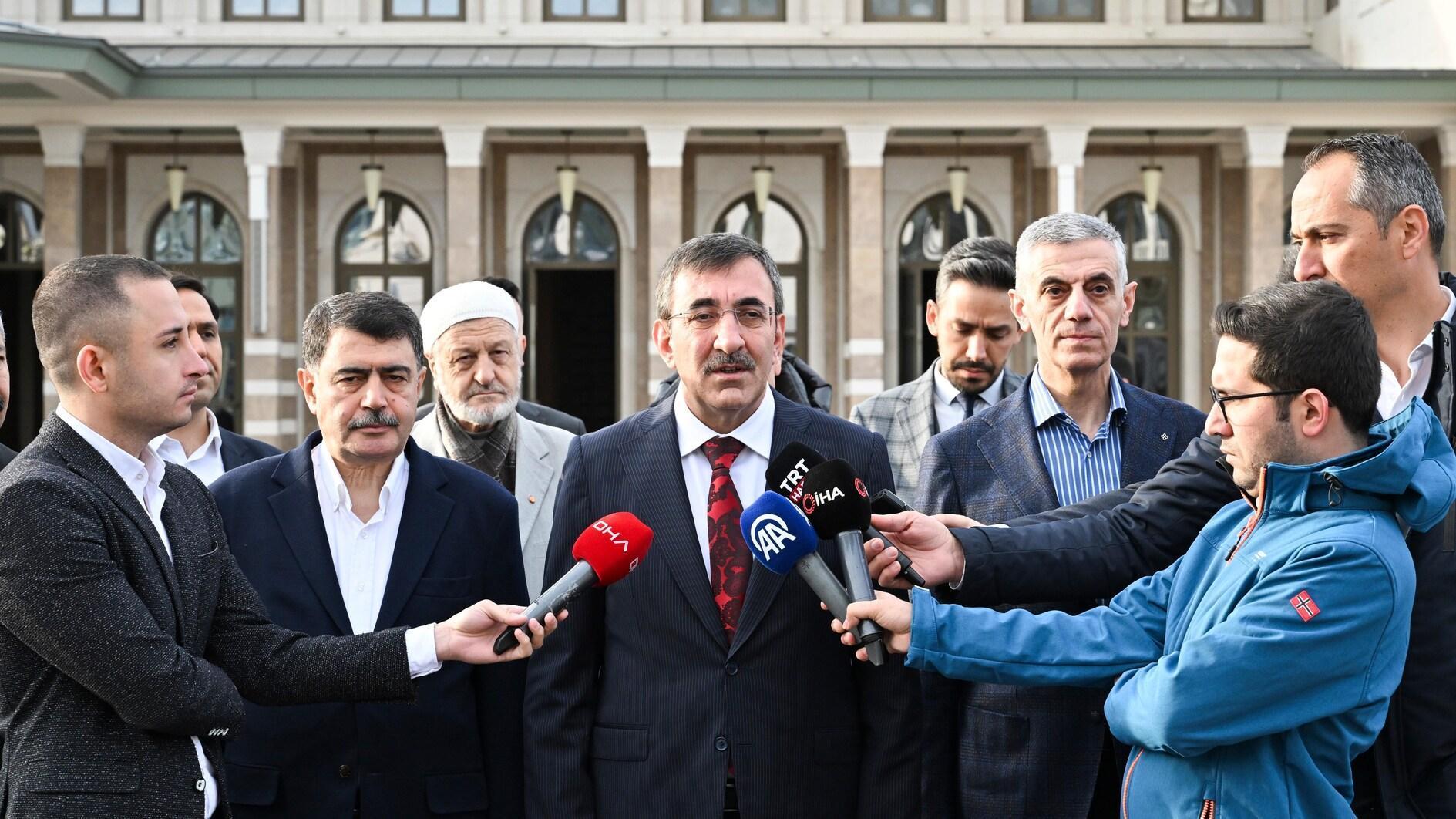Archeologist out to unearth legendry Hadrian Temple
ERDEK - Doğan News Agency

DHA photo
A new round of excavations has begun at the ancient city of Kyzikos in the 2,500-year-old Erdek district of Balıkesir in northwest Turkey to unearth more Roman-era artifacts and the legendry Temple of Hadrian.The longest edge of the temple, measuring some 161 meters, was unearthed in 2010, recalled Nurettin Koçhan of Ataturk University in eastern Erzurum province, the head of the excavation team.
“In the early stages, we tried to clear the surrounding area and reveal structural ruins. Currently, excavations are continuing in the western back part of the temple so that the northern part of the temple can be drilled,” he told Anadolu Agency.
“Our goals are to be able to establish the true measure of the temple and the remains of the superstructure, and to reveal the origin of the temple without excavating its higher parts. So far, we have partly learned this,” he said.
The temple was subject to major destruction over time, as the marble works of the temple were burned up in lime wells and cube-shaped dry cereal stores were placed around the temple.
The area was used as a cemetery during the Middle Ages. Some medieval structures were added, according to Koçhan.
Now the team is also trying to figure out the nature and purpose of these additional buildings.
“So far, we could not find anything although we revealed three rooms. We are hoping that more can be found in the northern direction. We are rather trying to discover structures,” Koçhan said.
Hadrian is one of the largest temples in Anatolia, according to Koçhan’s assistant, Korkmaz Meral, who added that frequent large earthquakes had caused great damage in the area around the temple.
During the previous 10 excavation campaigns at the site, teams have unearthed lion-headed marble gutters, 105x85-cm full-size marble roof tiles, 2.25-meter columns, cube-shaped food stores known as Pithos, Kyzikos coins, a king’s head, a tomb in which 10 people were buried with gifts, inscriptive stones providing information about the tomb, the largest Roman era capital measuring some 1.9 meters in diameter, 2.5 meters in height and 20 tons in weight and two lime wells in which historical artifacts were burned to produce lime.
Excavations at the ancient city are run by the contributions of the Culture and Tourism Ministry, the Erdek General Directorate of Museums and the Erdek Municipality.
















